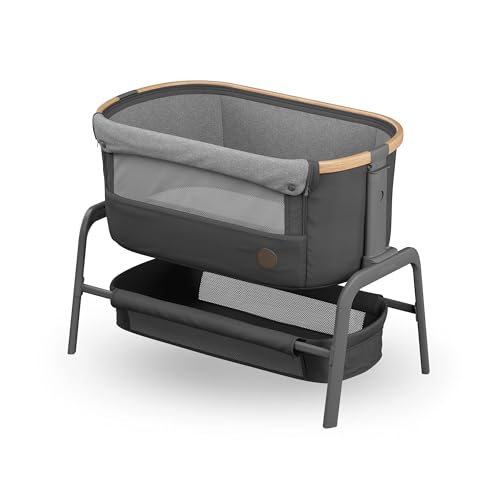 Bedside Cosleeper
Bedside Cosleeper
A bedside cosleeper can be described as a bassinet that attaches to the side of your adult bed. As long as you adhere to the CSPC guidelines for sleeping spaces for infants it's secure.
These guidelines are similar in many ways to crib bedding standards. You can learn more about these guidelines here. When selecting a bedside sleeping device security, comfort and ease of use are the primary factors to consider.
Safety
Many new parents and expecting mothers have embraced cosleeping or bed-sharing, as per the American Academy of Pediatrics recommendation that infants should sleep in the same bedroom as their parents. The Academy states that room-sharing is safer than sleeping with a baby in the same bed as it reduces instances of Sudden Unexpected Death in Infancy, or SIDS. While the AAP does not recommend bed sharing but does recommend that cosleeping be done on a separate sleep surface to minimize the risk of SIDS. The creation of the bedside crib was essential for many families.
A bedside cosleeper is a crib-like sleeper that is attached to an adult bed frame. The bedside cosleeper allows parents to keep an eye on the baby and allows them the freedom to sleep in their own bed. The best cosleepers have strict safety standards and are constructed with sturdy, high-quality materials. Look for the Juvenile Products Manufacturers Association (JPMA) stamp of approval, which confirms rigorous product testing and quality control to ensure your child's safe cosleeping experience.
The safety of a bedside cosleeper depends on several factors that include the way it is set up and connected to the parent's bed. If the bedside cosleeper isn't connected to the bed of the parent in a way that prevents the gaps and spaces in which an infant can become trapped, it could create a suffocation hazard. It is important that the attachment system of a bedside cosleeper be tested to ensure that it can withstand the forces that could be imposed during the course of use, for example, parents rolling onto and off of the sleeper or a 25-lb. The attachment system or corners on the bedside cosleeper should be exposed to the horizontal force.
The voluntary standard for bedside sleeping cribs incorporates, as a reference, the federal consumer product safety standards for bassinets (16 CFR part 1218) which includes performance requirements for fabric-sided closed openings. The standard's requirements for mandatory compliance deal with the risk of head and neck imprisonment by requiring that after the application, release the 50-lb. The standard also stipulates that after the application and release of a 50-lb. It is not allowed to create a gap larger than 1.0 in. ASTM's electronic Reading Room offers read-only versions of the standard.
Convenience
Many parents do not allow cosleeping because they fear the risk of suffocation, or SIDS or because it is an act of "Ferberization", which forces children to be in a room by themselves. Anthropologists have observed for a long time that a lot of mammals, primates, and people from non-Western cultures cosleep frequently. This is because babies are soothed by hearing their mother's voice, and can also learn to self-soothe.
The best twin bedside cot sleepers feature a smart design that attaches to the side of a bed and swivels for ease of access to feedings in the middle of the night or diaper changes. Look for a model with adjustable feet, which retract to accommodate different sizes of mattresses. It should also have an ample storage area to store all of your baby's essentials.
Choose a bedside sleeper that will fit the standard crib bedding, so that it will be safe to use as your child grows. You might also consider a convertible model that could transform into a play area or a more deep bassinet for a long time of use, and folds up easily to travel.
Portability
A bedside co sleeper bedside cot with wheels or a light base is easier to move than one with a bulky wooden frame or base. The babybay bedside baby sleeper sleeper HALO bassiNest essencetia, as well as Snoo Smart Sleeper are all movable. They come with feet that can be adjusted that can be retracted to accommodate platform mattresses and legs that fold inwards so that they are in close proximity to the mattress; 100 mesh sidewalls for ventilation without covering the baby's mouth or nose.
 The Arm's Reach ClearVue is a great option. It adjusts in 1" increments and can be used as a bassinet or portable bed. It also swivels to allow easy access to your baby so you can comfort your baby, nurse or monitor her at night.
The Arm's Reach ClearVue is a great option. It adjusts in 1" increments and can be used as a bassinet or portable bed. It also swivels to allow easy access to your baby so you can comfort your baby, nurse or monitor her at night.




